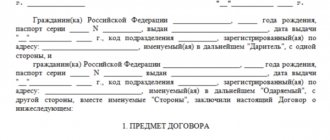What is the social norm for electricity consumption?
Social norms for electricity consumption are the established amount of electricity consumption per citizen. They are formed at the level of regional authorities.
It concerns absolutely all people, regardless of the purpose for which they need electricity.
The state has provided such a standard to achieve certain goals:
- reduce household expenses for electricity;
- increase the responsibility of employees of management companies;
- have the opportunity to receive payment from the population on time in a certain amount.
However, citizens who have metering devices are also faced with paying for electricity according to the standard when the following situations arise:
- no metering station;
- information on the installed device is transmitted late;
- the counter is broken;
- intentional damage to the meter was detected;
- the employee keeping track of energy consumption does not receive the necessary information.
Definition of concepts
Here are a number of terms that characterize this service and are associated with it:
Electricity is the volume of resource that enters the general network and reaches the consumer.
Social consumption standard is the amount of electricity consumption established by law per person. Applicable in the following cases:
- an individual meter is not installed;
- meter readings were submitted later than the deadline;
- the meter has failed or was deliberately damaged.
Kilowatt hour is the amount of energy consumed by household lighting and other appliances.
The basic tariff is the total expression of the cost of a unit of electricity for apartments and houses equipped with gas stoves and central heating.
How to calculate the standard electricity consumption
To calculate the payment for electricity, you should use a certain formula:
where S is the amount of funds paid without a counter;
T is the price per 1 kilowatt;
N are regional coefficients;
K is the number of registered citizens in the house.
Provided that the citizen making the payment has powerful equipment in his home and wastes more electricity than established by the standards, then he should overpay, but the tariff will be higher.
It is worth noting that there are additional provisions in the legislation that must be taken into account before determining the contribution amount:
- When a pensioner lives alone in an apartment, in the first year payment is made at a reduced rate, but the next year it is paid according to special social norms.
- If there is a stove in the house, the standard energy consumption per citizen is 43 kW.
- A person living in a village must pay for electricity at a rate of 90 kW.
Electricity consumption calculator
Electricity consumption can be calculated using an online electricity calculator . To do this, enter the following data into its fields:
- power of one or more devices (for example, light bulbs, computers or televisions);
- the price at which you buy 1 kWh of electricity;
- Operating time of the device, if the exact time is not known, take an approximate one;
- frequency and operating time per day (hour, day, month, year).
If you enter your regional electricity rate , the online calculator will calculate how much money you spend on each appliance or power tool.
If the calculator is not displayed, go to the calculators and services section - follow this link.
You can also use our other calculators at this link.
How much electricity does an apartment consume on average?
If we talk about the average electricity consumption in an apartment, then without all the extra charges it is approximately the following (kW):
- 1 person – 96;
- 2 people – 146;
- 3 people – 166;
- 4 people – 186;
- 5 people – 206.
Monthly allowance (kW):
- when a private house is dilapidated, the volume of electricity increases by 1.2-1.5 times;
- for a household in a village - plus 90;
- during the heating season, if electricity is used to heat the household - plus 3000;
- if the house has a stove - plus 43;
- if there is an electric water heating device - plus 100.
What formula is used to determine one-time tax from January 1, 2021?
Electricity spent on general household needs is calculated in two ways:
- According to the readings of the metering devices installed in the apartment building.
- According to generally accepted standards that are established by regional or local authorities.
The first option is often more economical and therefore more profitable for residents. The presence of meters simplifies the calculation process. At the end of the months, the responsible employee takes readings from the common building meter and subtracts from it the kilowatts consumed by each apartment separately. As a result, the number of kilowatts spent on the operation of the elevator, lighting in the entrances and other needs is calculated.
The formula for calculating electricity ONE for each individual apartment is as follows:
(OP – SP) * DP = IO , where:
- OP – general house consumption indicator;
- SP - the amount of electricity consumption for all individual metering devices (this includes apartments without meters);
- DP – the share of the apartment’s area from the total area of all apartments;
- IO is the final indicator of payment for an apartment.
DP is calculated using the formula:
OPK / SP , where:
- OPK – total area of the payer’s apartment;
- SP – the total area of all apartments in an apartment building.
Let's look at an example: There are 100 apartments in an apartment building with the same area of 50 sq.m. Each of them consumed 150 kW per month. The total electricity consumption was 17,000 kW.
Let's do the calculation: (17000 – 15000) * (50/5000) = 20 kW.
One apartment will be charged for 20 kW spent on ODN.
Calculation rates are individual.
Read about the average electricity consumption in an apartment per month here.
Electricity consumption standards per person by region of the Russian Federation
At the legislative level, a standard indicator for electricity consumption has been established in 2021.
Mosenergosbyt, through simple calculations, decided that this standard is equal to 350 kW/h for each person who is registered and lives in the apartment.
It is worth noting that each person can independently determine the personal amount of energy consumption based on their financial capabilities. However, one important condition must be observed - this volume should not greatly underestimate the limit, ideally by no more than 40%.
If we talk about the standards separately by region, then you need to understand that Russia is a large country, and many aspects influence the amount of payment.
Among them:
- type of stove - electric or gas;
- are there special standards established in the region;
- are there devices that consume a decent amount of energy;
- type of area - village or city.
As for the city of Moscow, the single population is eligible for benefits. There are certain standards for them, taking into account the appliances used in housing.
When the house has a gas stove, the payment indicator should be around 50 kW/hour. For other cases, the figure increases to 80 kW/hour.
If a person lives in a rural area, then special conditions apply to him. The standard rate for them is set at 90 kW/hour. When it comes to pensioners, they have reduced tariffs and social standards.
How is consumption calculated?
Electricity is consumed by a huge number of devices, without which we cannot live in modern life. Every day, lighting fixtures and various household appliances are used in houses and apartments. Each unit consumes a certain amount of energy, which can be measured by knowing the power of the device.
For example, a refrigerator uses on average 0.04 kW per hour, 1 kW per day or 30 kW per month. With other devices, everything is not so clear, because they do not work around the clock, but are turned on only when necessary.
To pay for electricity, you do not need to calculate separate consumption for each piece of equipment or lighting fixture.
The calculation is performed using a general indicator for all kilowatts consumed. The billing period is considered to be one calendar month. There are several ways to calculate consumed electrical energy:
- According to the counter.
- According to the standards established for those subscribers whose meter does not work for some reason.
Each option has its own unique calculation formula.
By meter
All electricity consumers are required to install special metering devices - electricity meters. They allow you to accurately measure consumed kilowatts. Payment for the provided electrical services is made using the meter. Regardless of whether the consumer has an electrical meter installed or a mechanical kilowatt calculation is carried out according to the following scheme:
Tps – Pps = PEE , where:
- Tps – current meter reading;
- Pps – previous meter reading;
- PEE – consumed electricity.
Let's calculate the consumed kilowatts using an example:
In June, the payer paid for electricity up to 3250 kW. In July, readings reached 3560 kW. Let's calculate the amount of energy expended using the specified formula: 3560 – 3250 = 310 kW.
The readings obtained are multiplied by the cost of kW, which depends on the region of residence. If we take Moscow as an example, then the price for 1 kW = 5.47 rubles. 310 * 5.47 = 1695.7 rub.
When installing two- or three-tariff meters, the cost per kilowatt changes depending on the time of consumption, which allows for serious savings.
If the device breaks down, then according to what standard?
Rules for the provision of utility services No. 354, which were approved on May 6, 2011, clearly regulate cases of payment for electricity in cases where the meter for one reason or another does not work. Paragraph 59 of the Rules states that the period for calculation without a meter begins from the moment the problem is identified.
Depending on the situation, the countdown date may be the day:
- Submitting an application from the user himself.
- Drawing up a report based on the results of the inspection.
- Expiration of the interverification period.
The absence of an exact date gives the right to take as a starting point the beginning of the month in which the malfunction was discovered.
Payment should be calculated based on average monthly electricity consumption , which is calculated over the last six months. For example, take the following readings:
- January – 220.
- February – 180.
- March – 250.
- April – 330.
- May – 190.
- June – 150.
The monthly average is calculated using the formula:
P6 / 6 = UP , where:
- P 6 – sum of readings for the last 6 months;
- UE – average indicator.
Applying the initial data we get:
P6= 220+180+250+330+190+150= 1020 kW 1020 / 6 = 170 kW.
For a full month, the amount for 170 kW will be taken; if the meter did not work for only a few days, then the total monthly indicator is divided by the number of days in the month and multiplied by the number of days when the device did not work.
For example, the meter was turned off for only 10 days, during which repair work was carried out and a new device was installed. (170 / 30) * 10 = 57 kW. In most cases, a working meter is installed quite quickly, and no additional calculations are made.
How can you reduce consumption?
To save their money, many try to reduce monthly electricity levels using legal and not entirely legal means.
There are several reasonable rules to reduce consumption:
- Air conditioning - be sure to ensure all doors and windows are closed.
- When purchasing equipment that runs on electricity, consider the amount of electricity used. The most economical option is A.
- Make sure there is no scale in the kettle - if there is scale on the walls of the appliance, the load on it increases, which means energy consumption increases.
- Make a smart home - use energy-saving light bulbs.
- The refrigerator should be placed in a dark place.
Refrigerator: 160–550 kWh per year
How much does he spend?
Unlike other equipment, the refrigerator works 24/7 - and this cannot be changed. Therefore, when choosing, it is important to look at two indicators: energy consumption class and annual kWh consumption - these parameters are in the technical specifications.
| Energy class | Average energy consumption per year, kWh | Average cost of energy consumption, rub. |
| A+++ | 160 | 779 |
| A++ | 240 | 1168 |
| A+ | 300 | 1461 |
| A | 350 | 1704 |
| B | 450 | 2191 |
| WITH | 550 | 2678 |
True, there are also situations when even class does not play a decisive role. For example, an A++ refrigerator can burn as much as a class A model - this depends on the volume, number of refrigerators and additional functions.
How to save money
Perhaps the only way to reduce expenses on a refrigerator is to extend its service life. There are some simple tips for this:
- do not install the refrigerator next to the stove
- do not put hot food inside
- defrost in a timely manner - if there is no No Frost function.
The mathematics is simple: if your class A device breaks down and costs 2,000 rubles per year, you can replace it with class A++, which will cost 1,000 rubles per year. But at the same time, you will have to pay at least 30,000 rubles for the purchase itself - and it will only be “repaid” after 30 years.
Legal basis
Legislative acts on issues related to the establishment and application of electricity consumption standards are as follows:
- Federal Law No. 614 “On the procedure for establishing and applying social norms for the consumption of electrical energy”;
- Federal Law No. 35 “On Electric Power Industry”;
- Federal Law No. 261 “On energy saving and increasing energy efficiency and on introducing amendments to certain legislative acts of the Russian Federation”;
- regional regulations establishing the resource standard per person living in a residential building and the rules for applying the social norm.
It should be noted that the state draws the attention of citizens to saving natural resources, therefore it is taking measures to ensure that metering devices are installed in homes. To stimulate the population, it is necessary to apply increasing coefficients when calculating electricity charges. Then it simply becomes unprofitable to pay more than is actually spent. But real consumption can only be determined using individual metering devices.
How to calculate electricity according to the standard without a meter in 2021
To calculate how much you are supposed to pay for electricity per month, use the following formula:
S = K × N × T , where
- S – the amount that a family must pay for using electricity without a meter;
- K – number of people in the family (registered in the residential premises);
- N – standard amount of electricity per person, approved by regional authorities;
- T – tariff for 1 kW/hour.
From the comparative table of the standard it is clear that it is difficult to meet it. And resource consumption above the norm is paid at a higher rate. Therefore, if possible, it is recommended to install meters and pay according to actual consumption.
It is possible to reduce electricity consumption by following a few simple rules. Citizens themselves are interested in reducing energy consumption; they take care not only of their money, but also of natural resources. Therefore, it is enough to know that they consume significantly less energy:
- household appliances marked with A, A+, A++;
- energy-saving and LED lamps;
- an electric kettle that is descaled in a timely manner (if possible, it is better to boil water in a regular kettle on a gas stove);
- air conditioning turned on with windows and doors closed;
- refrigerator located away from radiators, sunlight, etc.









